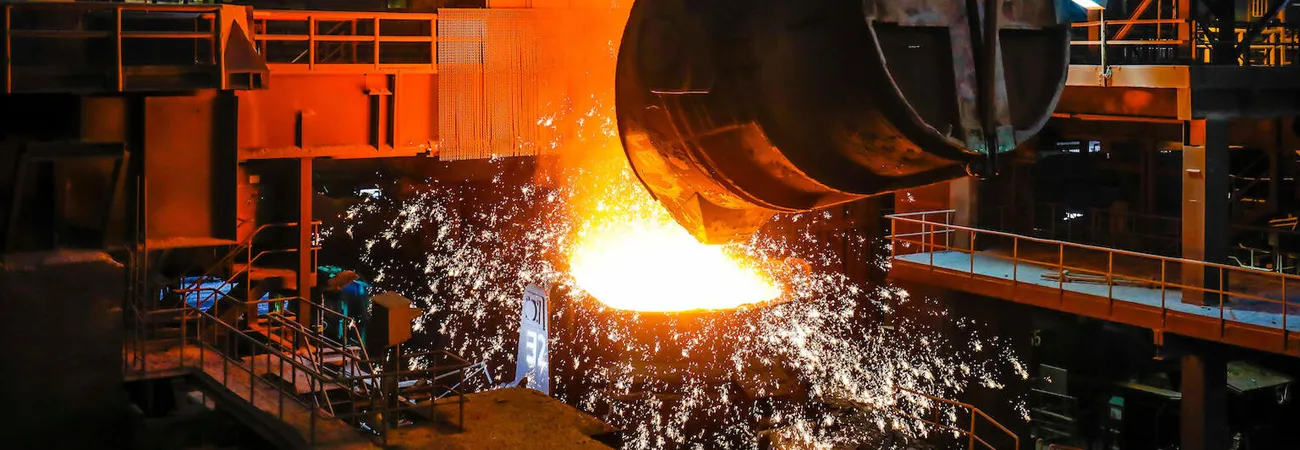i ECONOMY
Aisha Steel Mills Limited posted a net profit of Rs132.16 million in the first half of the ongoing fiscal year (1HFY24) compared to a net loss of Rs2.09 billion in 1HFY23, registering a stupendous growth of 106.3%, reports WealthPK. The company's revenue jumped to Rs22.6 billion in 1HFY24 from Rs15.68 billion in 1HFY23, representing a growth of 44.4%. During the period under review, the company posted a gross profit of Rs2.16 billion compared to a gross loss of Rs271.6 million in 1HFY23, registering a remarkable 898.5% growth. The company’s administrative expenditures increased by 15.20% during this period due to a rise in interest rates and currency depreciation.
Similarly, an operating profit of Rs1.72 billion was registered in 1HFY24 against an operating loss of Rs518.5 million in 1HFY23. Furthermore, other income skyrocketed to Rs267.7 million in 1HFY24. As per the financial report, the company posted a profit-before-tax of Rs61.44 million in 1HFY24, showcasing an astounding surge of 101.97% against a loss-before-tax of Rs3.11 billion in 1HFY23. As a result, the company reported an earnings per share of Rs0.08 compared to a loss per share of Rs2.31 in 1HFY23.
Profitability ratios analysis
According to the analysis, the gross profit ratio has shown a fluctuating tendency from 2018 to 2023. Overall, the gross profit margin fell from 17.53% in 2018 to 6.47% in 2023. In 2021, the company's profit margin peaked at 20.29%. The gross profit ratio kept declining in 2022 and 2023 because of decline in sales volume, currency devaluation and increased borrowing expenses. Overtime, the net profit to sales ratio showed fluctuations, ranging from a negative 2.07% in 2020 to a healthy 11.55% in 2021. The firm posted a negative ratio of 10.34% in 2023.
This was because the steel demand declined on the global market, and the State Bank of Pakistan was having trouble opening the letters of credit due to foreign exchange liquidity issues. The operational leverage ratio continued to stay below 1 and even showed a negative value of 1.1 in 2019 and 0.65 in 2022. This demonstrates that the company bore higher costs for each product due to its high variable costs. In 2021, the steel manufacturing company recorded the greatest return on equity, at 56.45%, and the lowest at negative 21.63% in 2023.
Liquidity ratios analysis
The current ratio evaluates how well a company can pay its short-term debts with its current assets. The company achieved the highest current ratio of 1.05 in 2021. However, it consistently remained below 1 in other years, indicating the firm risked being unable to meet its obligations. Similarly, the quick ratio shows how stable a company is in meeting its commitments. This ratio has consistently been less than 1, implying that the company was barely able to meet its obligations. Likewise, the cash-to-current-liability ratio did not rise above 1 from 2018 to 2023, indicating there was not enough cash on hand to pay current liabilities.
Capital structure ratios analysis
The financial leverage ratio calculates how much of a company’s operations and asset acquisitions are financed by debt or equity. The company's financial leverage peaked at 2.49 in 2019, showing a higher reliance on debt to fund its activities and assets during that year. The interest cover ratio evaluates the company's capacity to meet interest-bearing commitments. The stronger the company's financial situation, the higher the ratio. The company's interest cover ratio was 2.78 in 2018. However, it declined in 2019 and 2020, before rebounding in 2021 to 6.63. The interest cover ratio plunged to -0.33 in 2023.
Credit: Independent News Pakistan









